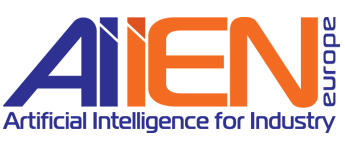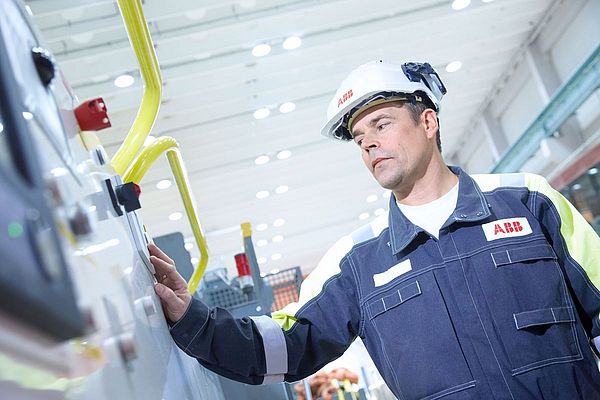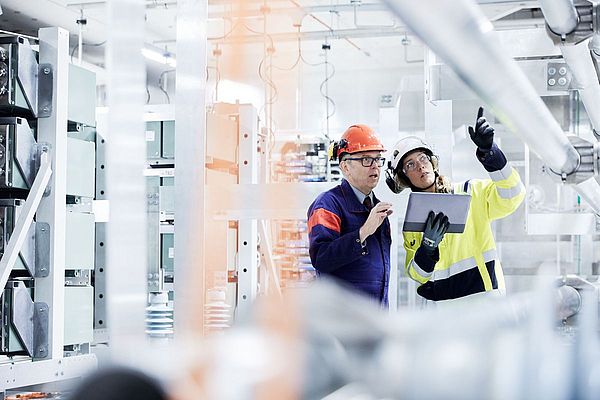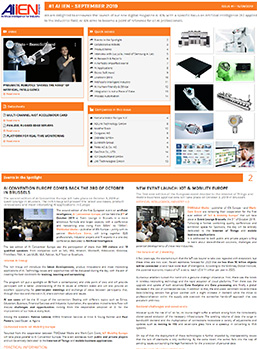Today, the Internet-of Things-technology is permitting industry to use data gathered through automation to actually predict when a failure may be imminent, and thus prescribe mitigating actions to maintenance personnel, based on historical data, that takes into account the specifics of the individual process, product being made, and environment in which it is being made.
This offers a far more dynamic and strategic approach, which helps to avert imminent failures, greatly assists with planning preventive maintenance and optimises production uptime.
Moreover, there is potential to significantly reduce overall maintenance costs because resources can be applied at the most optimum time, and the level of insight garnered allows for a specific preventive solution to be applied.
Predictive and prescriptive maintenance are terms that are often used interchangeable and are at times confused and misunderstood. Predictive maintenance is being adopted widely. Prescriptive, on the other hand, while fast growing, is still in its early stages and represents the “gold standard” industry is endeavouring to move towards.
The challenges facing predictive maintenance
There are huge advantages of moving on from preventive to predictive maintenance. However, most current predictive maintenance efforts will predict failure due to occur (pre-conditions) but can’t give information on probability of failure or prediction of time to failure. There are some further challenges that are worth noting.
Setting the conditions for successful predictive maintenance
Simply put, condition monitoring is at the crux of predictive maintenance efforts. Using sensors and field devices to gather information on machinery to provide intelligence allows engineers to determine when the equipment actually needs to be serviced, rather than relying solely on pre-determined time intervals. Data is provided in real time and generates a regular stream of information on equipment and operational status, informed by regular and continuous assessment and anomaly detection.
The sensors and devices employed can be connected to the plant network, and even be shared across an enterprise through Internet of Things technology. Edge and cloud applications have been important drivers of predictive maintenance, as they create greater opportunities to harness, process, share, and employ data obtained from a wide range of sources.
Producers are able to use increasingly higher volumes of data on asset conditions to create deeper insight and better analytics for asset management.
The power of prediction
The benefits of predictive maintenance are not limited to more efficient and precise maintenance scheduling. There are also operational benefits to plant operations which are, understandably, a key part of its appeal. Ensuring timely maintenance helps industrial producers avoid equipment failure and the inevitable costs of downtime. Performing maintenance only when necessary also reduces the overall financial burden of maintenance across the asset’s lifespan, compared with interval-based maintenance.
The power of advanced predictive maintenance means that analytics can be generated in order to show that equipment needs to be repaired in order to avoid failure. Crucially, especially from a commercial or critical infrastructure perspective, it can also provide additional information on the probability of failure as well as an accurate prediction of time to failure.
Producers can plan exactly which maintenance activities to prioritize, and which to postpone without risk of failure. They can group together maintenance actions and be proactive in addressing imminent issues, depending on the probability of failure in the foreseeable operational future.
Prescriptive maintenance and machine learning with humans at the core
As each day passes, our ability to understand our assets and how they function is improving. Machine learning, via advanced data analytics, can help us recognize when they enter failure modes.
Many can now identify the pre-conditions around them. Because these processes are automated, they reduce the burden on maintenance teams and allow a higher level of input by the people monitoring the equipment as they are empowered to make data-driven decisions about maintenance action (or inaction).
The aim is to use artificial intelligence applications to understand and spot patterns that ultimately lead to equipment either experiencing an issue or stopping working all together. Then, moving beyond simple monitoring and recommending, these applications can be programmed to make their own decisions as to the next maintenance steps, and to act on them automatically, insofar as this is physically possible.
If there is enough intelligence in the system, in theory, the plant can operate with less frequent human interaction in terms of overview and correction when the plant’s assets encounter disruption or enter unexpected states. This means that there is a huge potential for greater agility and operational responsiveness that drives productivity and profitability.
Asset sensors will collect data on an ongoing basis, measure it against information gathered from other machines and broader data stored in the cloud, subsequently generating insights and actionable responses for engineers in real time.
In the not-too-distant future, we will see a wider adoption of prescriptive maintenance, which truly offers a more dynamic and controlled maintenance approach. In order to do this however, there will need to be small changes in thinking and some different processes put in place if it is to be successfully applied in a live industrial setting.
What’s next?
The potential for technology to contribute to a further evolution of industrial maintenance cannot be understated, and the possibility of building on predictive and moving ever closer towards prescriptive maintenance is exciting for those working in industrial operations.
However, even with the very best advanced services, technology and predictive maintenance, and regardless of how much automation can augment physical service operations, impactful and meaningful maintenance actions need highly experienced people to understand and respond to the information generated.
Operators must tackle the barriers to successful implementation of predictive maintenance in order to build a stable and optimal platform for future adoption of prescriptive maintenance.
By Paul Gogarty, Asset Lifecycle Product Manager at ABB Industrial Automation Service





























